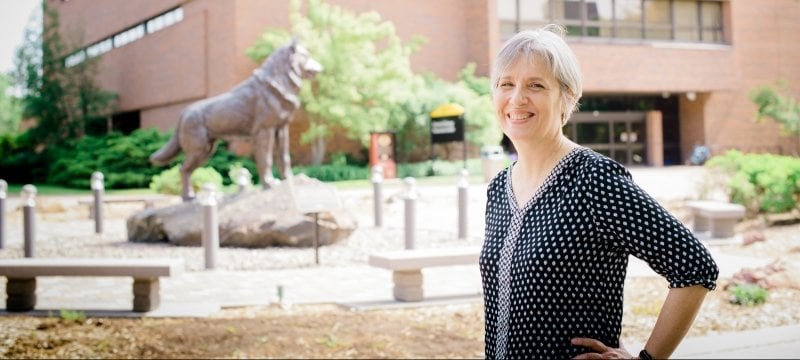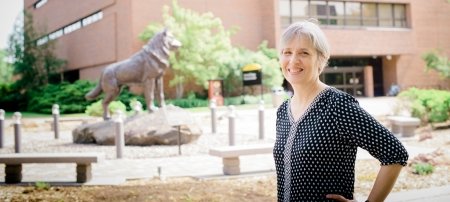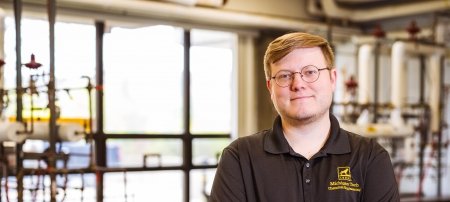Question And Answer With Sonia Goltz, Management Professor
Question: Tell us about your current research.
Answer: There are common themes in my work particularly around both gender equity and organizational change. An interdisciplinary group I am a part of has received two National Science Foundation (NSF) ADVANCE grants (more than $1 million in total) to bring equity programs for women and minority faculty in STEM (science, technology, engineering, and math) to our campus and to other Midwestern universities.
We need to increase the presence and satisfaction of underrepresented STEM faculty in the Midwest to be able to better support underrepresented students.
I also explore the relationships between power, coercion, equity/equality, and freedom. It is important to examine this because coercion requires power, equality requires freedom, and freedom has been conceptualized as being the opposite of being subjected to coercion. I think we need to get a handle on how these elements all interact and where exactly we want to place ourselves. I recently presented a discussion paper at the American Psychological Association on this topic and I am very interested in what people have to say about these matters.
Q: What inspired you to get started in this work?
A: The gender equity work was motivated by my own experiences and also by observations of what others were going through.
My interest in power, coercion, and freedom also relates to this, but additionally, I am concerned about how we as a species handle our newfound ability to influence people using technology. Nobel Prize winners Thaler and Sunstein wrote the book Nudge, which describes what is called “choice architecture.” Choice architecture refers to methods in which people are subtly influenced to make certain choices. This has always occurred in some form, but is now easier to do in a nontransparent and nonconsensual way given advances in technology. I believe more thought needs to be put into the ethics of using choice architecture, such as how much transparency and consent we should require.
Q:What impacts on the future can this research have?
A: I hope that the ADVANCE programs on university campuses stimulate greater equity to occur in a shorter amount of time. To solve tomorrow’s problems we need everyone to participate fully, and continuing inequities will not allow us to best use everyone’s capacities to make a better world.
I also hope that the work on looking at the interaction of power, coercion, equity, and freedom gives people pause so that we don’t end up using technology to create greater inequities in power and decreased freedom for the groups of people who don’t have much control over technology or data.
Q: What role has technology had in your work?
A: My area is organizational behavior (OB), which might not sound like it has much to
do with technology, but human behavior is influenced by technology and vice versa,
so it is important to examine how behavior
changes when technology changes—thus the interest in the increasing role that choice
architecture is playing. Also, I certainly wouldn’t be as interested in equity in
STEM disciplines if I didn’t work at a technological university.
Q: How do you merge your teaching and research?
A: I have a range of interests, so I constantly read about different areas to conduct my research. Then I teach on a topic and something I read when doing my research comes to mind and I bring it into my lecture. Also, in order to teach, I have to know about a lot of topics. OB covers a range of the social sciences—from anthropology to sociology to psychology and even political science and economics—and applies their principles to the workplace. This wide basis of knowledge required to teach OB to students provides a springboard for me to go and do work in a particular area if I get interested in it. In other words, I don’t feel constrained to work only on a focused topic because of a lack of knowledge.
Q: Can students participate in this project, and if so, how?
A: Yes, we have graduate students who examine the data generated as part of the NSF grant. If a student is interested in the conceptual work I’m doing on power and freedom, they can work with me on additional papers since I’m only beginning to explore this topic. If you are intellectually curious and like to reflect about concepts, this would be your kind of project!
Q: What trends are you seeing in your field?
A: I am really excited to see the research that young people are doing and presenting
in my field. Topics that were not considered mainstream in the past are now becoming
mainstream. Also, more individuals are
interested in research on sustainability. Seeing this work gives me a lot of hope
for the future. I can see that current students—both undergraduates and graduate students—are
interested in doing research that will help the world solve its problems. I think
that will go a long way to turning things like climate change and economic inequities
around.
Michigan Technological University is an R1 public research university founded in 1885 in Houghton, and is home to nearly 7,500 students from more than 60 countries around the world. Consistently ranked among the best universities in the country for return on investment, Michigan's flagship technological university offers more than 120 undergraduate and graduate degree programs in science and technology, engineering, computing, forestry, business, health professions, humanities, mathematics, social sciences, and the arts. The rural campus is situated just miles from Lake Superior in Michigan's Upper Peninsula, offering year-round opportunities for outdoor adventure.




